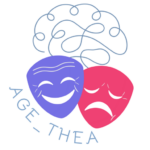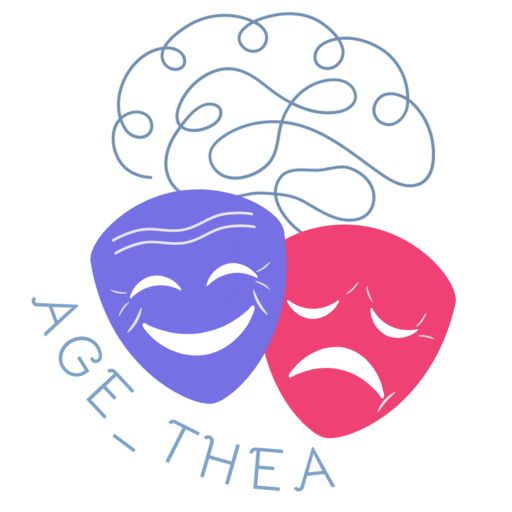Online Course
Home | About | Project Results | Partners | Training Platform | Contact | News
Home | About | Project Results | Partners | Training Platform | Contact | News

Online Course

Online Course
Module 6
Practical theatre activities that can be implemented by social and mental health professionals and cultural operators workingwith older people.
Practical material
Activity 1
Physical and cognitive awakening through music and movement.
● To warm up the group for the following activities
● To awaken the body – physical/mental/emotional activation
● To adjust one’s pace to that of others
● To work on body awareness, both on oneself and of other people
● To work on balance and concentration
● Mutual support, connection, dialogue and contact between people
● To allow the facilitator to begin to understand the type of group and the people who are part of it
● To stimulate imagination
Activity 2
Scene writing
● Stimulation of cognitive engagement;
● To encourage psychosocial skills (e.g. overcoming fear of exposure, developing and taking responsibility, self-confidence, self-esteem, self-expression)
● To enable individuals to find common ground in the experiences of others;
● To enhance group skills (e.g. team bonding, building trust, mutual respect and listening to the other);
● To create a relaxed and comfortable atmosphere where everyone can open up according to their own pace;
● To foster a profound sense of sharing, connection and mutual understanding.
Activity 3
Use of the story, writing and image – The mineralogy of the word
● To get to know each other
● To foster a profound sense of connection and mutual understanding.
● To enhance tact, empathy and sensitivity towards the other
● Mutual support, connection, dialogue and contact between people
● To enable individuals to find common ground in the experiences of others
● To stimulate the development of social relations further and outside the weekly meeting time
Multimedia Resources
Biological fireworks
The following video illustrates one of the possible activities to be proposed within a social theatre workshop.
This exercise stimulates movement and connection with others, giving space for fun thanks to music and gestures with coloured handkerchiefs.
In particular, it allows:
● To awaken the body – physical/mental/emotional activation
● Connection, dialogue and contact between people
Movement and imagination
The following video illustrates one of the possible activities to be proposed within a social theatre workshop. It shows a possible version of the Active learning activity 1 – Physical and cognitive awakening through music and movement.
This exercise stimulates movement and connection with others, giving space for fun and to the imagination of possible scenarios.
In particular, it allows:
● To awaken the body – physical/mental/emotional activation
● Connection, dialogue and contact between people
● To stimulate imagination
Movement, imagination and mirror
The following video illustrates one of the possible activities to be proposed within a social theatre workshop. It shows a possible version for the Active learning activity 1 – Physical and cognitive awakening through music and movement. In this case, the exercise is done in pairs; in turn, one member suggests gestures and the other reproduces them like a mirror.
This exercise stimulates movement and connection with others, giving space for fun thanks to the imagination of possible gestures.
In particular, it allows:
● To awaken the body – physical/mental/emotional activation
● To adjust one’s pace to that of others
● To work on body awareness, both on oneself and of other people
● Connection, dialogue and contact between people
● To allow the facilitator to begin to understand the type of group and the people who are part of it
● To stimulate imagination
Music and movement
The following video illustrates one of the possible activities to be proposed within a social theatre workshop. It shows the Active learning activity 1 – Physical and cognitive awakening through music and movement.
This exercise stimulates movement and connection with others, giving space for fun thanks to music and the imagination of possible gestures.
In particular, it allows:
● To warm up the group for the following activities
● To awaken the body – physical/mental/emotional activation
● To adjust one’s pace to that of others
● To work on body awareness, both on oneself and of other people
● To work on balance and concentration
● Mutual support, connection, dialogue and contact between people
● To allow the facilitator to begin to understand the type of group and the people who are part of it
● To stimulate imagination

Project no. 2 02 3 – 1 – R O 01 – K A 2 2 0 – A D U – 0001 6 09 7 3
Funded by the European Union. The views and opinions expressed are solely those of the author(s) and do not necessarily reflect the views and opinions of the European Union or the National Agency for Community Programs in the Field of Education and Vocational Training (ANPCDEFP). Neither the European Union nor ANPCDEFP can be held responsible for them.

